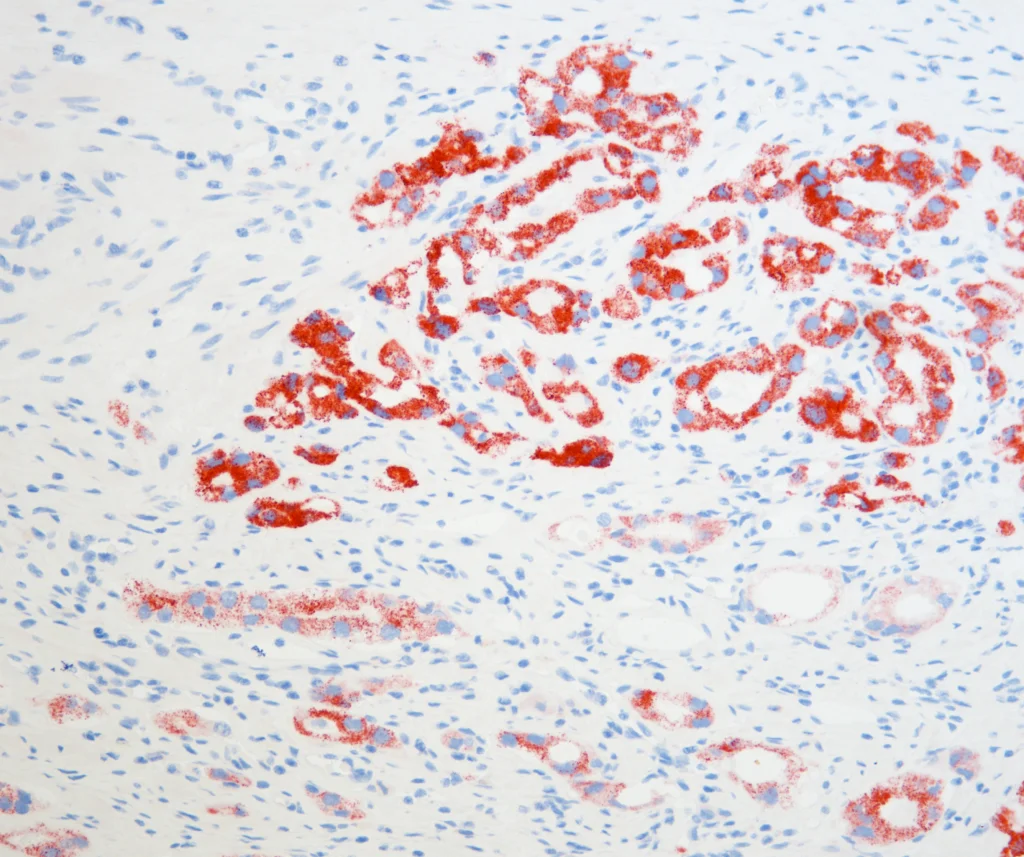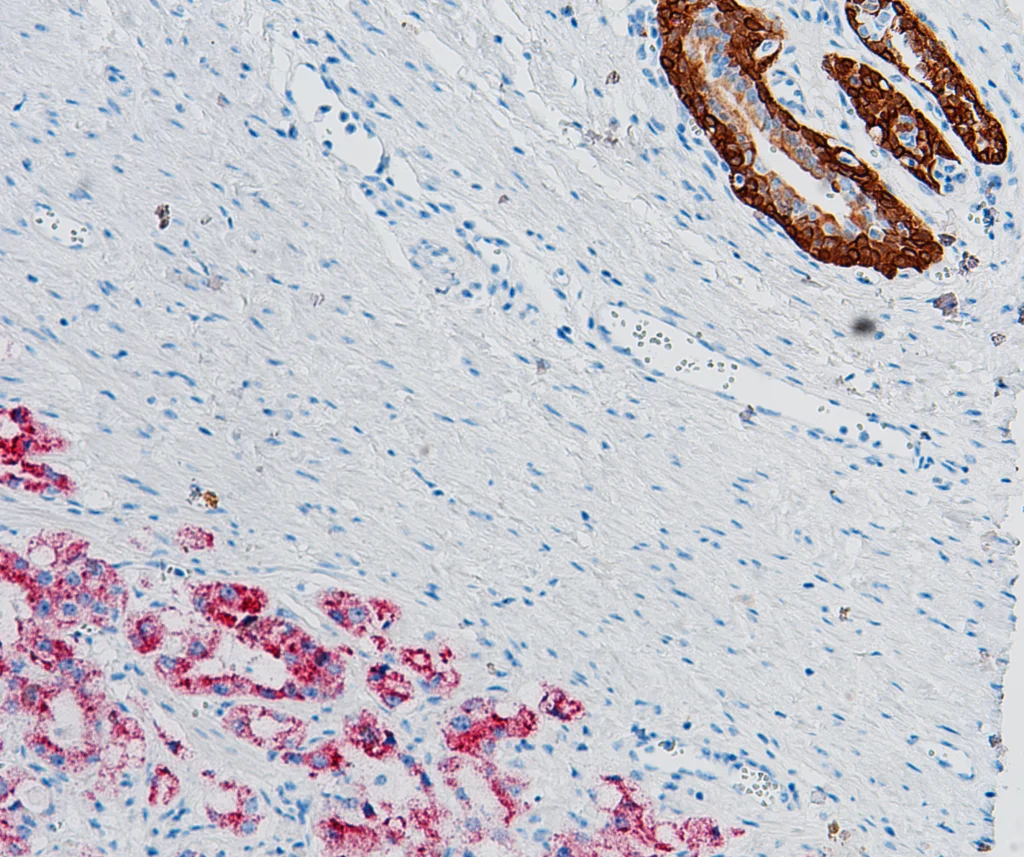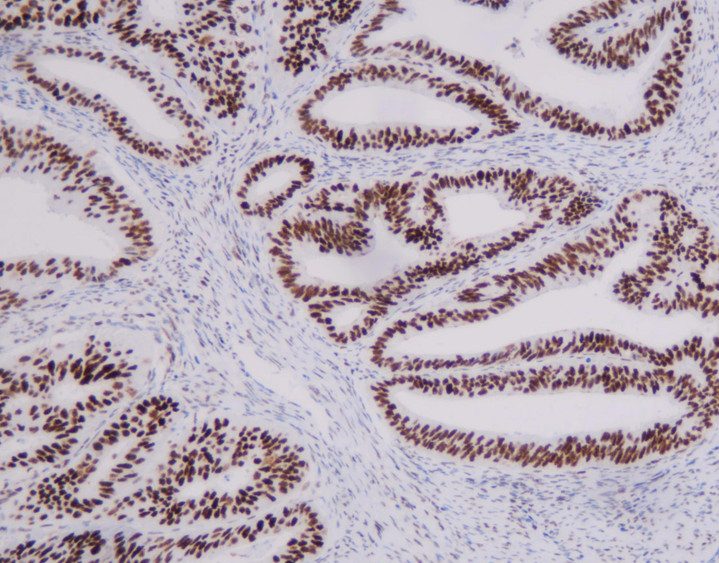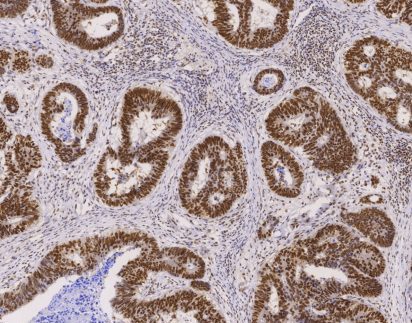Overcoming Challenges in Multiplex Immunohistochemistry Experiments Common Challenges in Multiplex Immunohistochemistry

By admin
Common Challenges in Multiplex Immunohistochemistry
Issues Related to Antibody Selection
Cross-Reactivity of Antibodies
Cross-reactivity is a common problem in multiplex immunohistochemistry experiments. Antibodies might stick to the wrong targets. This causes false results and makes experiments less trustworthy. The issue is worse when targets are similar or when many antibodies are used at once.
Limited Availability of Validated Antibodies
Finding tested antibodies for specific targets is a big challenge. Researchers often have trouble finding antibodies proven to work well in multiplex experiments. This can slow down studies or lead to poor results. Senot Biotech helps by offering over 460 primary antibodies and their own secondary antibody systems. These ensure good staining results.
Optimization of Staining Protocols
Balancing Signal Intensity and Background Noise
Getting the right balance between signal strength and background mess is key for clear results. Too much background noise can hide the target signals. Weak signals might mean missing important detections.
Standardization Across Multiple Markers
Making staining methods consistent for many markers on one slide is tough. Different targets need different prep steps, antibody strengths, and detection tools. Careful planning is needed to keep results steady across all markers.
Tissue Preparation and Preservation Problems
Effects of Fixation Methods on Results
How tissues are fixed affects staining quality a lot. Fixing too much or too little can change how targets work. This impacts antibody sticking and gives uneven results. Using tested fixatives from product kits helps get accurate staining. Using untested fixatives can lead to surprises.
Avoiding Tissue Damage During Processing
Bad handling during tissue prep can harm or ruin samples. This is a big issue for small biopsy samples or rare tissues. Damage affects the sample’s quality and reliability.
Strategies for Troubleshooting and Optimization
Enhancing Antibody Specificity
Techniques for Reducing Cross-Reactivity
To cut down on cross-reactivity, researchers can use pre-treated antibodies. They can also test each antibody alone before mixing them. Adding blocking steps with serum from the same animal as the secondary antibody reduces unwanted sticking.
Importance of Validation Studies Before Use
Testing antibodies before using them in multiplex experiments is crucial. Checking them in real conditions ensures they work right and match other materials.
Improving Staining Protocols
Adjusting Incubation Times and Concentrations
Tweaking how long antibodies sit and their strength can improve staining a lot. Shorter times might reduce unwanted sticking. Finding the right strength gives clear signals without too much background mess.
Utilizing Advanced Detection Systems for Improved Sensitivity
Better detection systems make signals stronger and clearer. CNT’s mIHC kit gives stronger signals and clearer marker placement than systems like Akoya Opal. These tools help get exact multi-channel staining with few changes to current methods.
Addressing Tissue-Related Issues
Best Practices for Fixation and Embedding
Using standard fixation and embedding steps keeps tissue shape and target quality intact. Tested reagents made for immunohistochemistry ensure results are the same every time.
Preventing Sample Degradation
Storing samples properly is important. Keep them cold during transport. Avoid long air exposure. Quick processing also protects tissue quality.
Advances in Multiplex Immunohistochemistry Technology
Emerging Detection Methods in the Field
Fluorescence-Based Techniques for Multiplexing
Fluorescence methods let researchers see many markers at once. Each target gets a different glowing label. These methods are very sensitive. They also show how markers relate in tissues.
Chromogenic Methods for Enhanced Visualization
Chromogenic methods are still useful. They make strong, lasting stains. These are great for long-term storage and comparing samples.
Automation in Multiplex Immunohistochemistry Experiments
Automation has changed multiplex immunohistochemistry. It makes experiments faster and more consistent. Fully automated staining machines finish in 2.5 hours. They handle advanced methods like multi-color immunohistochemistry. This cuts human mistakes and boosts how many samples can be done.
Applications of Multiplex Immunohistochemistry in Research and Diagnostics
Role in Cancer Research and Biomarker Discovery
Multiplex immunohistochemistry is key in cancer research. It spots many tumor markers in tissue settings at once. It helps find markers that predict disease growth and understand tumor differences.
Applications in Neurological Disease Studies
In brain research, this method studies complex cell interactions in brain tissues. It maps protein patterns linked to brain diseases. This helps uncover how these diseases work.
Celnovte Biotechnology Industry: A Trusted Partner for Biological Science Products
Overview of Celnovte Biotechnology’s Product Offerings
Celnovte Biotechnology offers full solutions for research needs. They provide primary antibodies, detection systems, quality control items, automated platforms, and special kits. Their p16/Ki-67 double staining kits are used a lot in cervical cancer screening.
Commitment to Quality and Innovation in Supporting Research
Celnovte is dedicated to new ideas. Their products meet high quality standards. They support cutting-edge research in many fields.
FAQs on Multiplex Immunohistochemistry Experiments
What are the key factors to consider when selecting antibodies for multiplex immunohistochemistry?
Key factors are how specific the antibody is, if it’s tested for experiments, if it works with other materials, if it might cross-react, and if it comes from a trusted supplier like Celnovte Biotechnology.
How can background noise be minimized during staining protocols?
Reduce background mess by improving blocking steps with animal-specific serums. Adjust antibody strength. Shorten sitting times if needed. Use advanced detection systems like CNT’s mIHC kit.
What are the advantages of fluorescence-based techniques over chromogenic methods?
Fluorescence methods are more sensitive. They spot many markers at once with different glowing labels. They also show marker locations in tissues. Chromogenic methods can’t do this as well.
Conclusion
Multiplex immunohistochemistry has challenges, but there are ways to fix them. Issues like cross-reactivity and background noise can make experiments tricky. Finding good antibodies and prepping tissues right is tough too. But strategies like testing antibodies, tweaking staining steps, and using advanced tools help a lot. Automation and new detection methods, like fluorescence and chromogenic systems, make experiments faster and clearer. Companies like Celnovte Biotechnology offer great products to support this work. Their automated machines and antibodies ensure reliable results. Multiplex immunohistochemistry is super useful in cancer and brain research. It helps find new markers and understand diseases better. With the right tools and fixes, researchers can get consistent, accurate results and push science forward.












